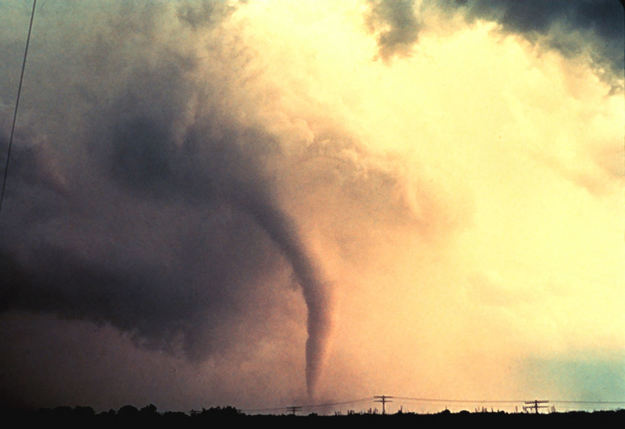|
First tornado captured by NSSL Doppler radar. Photo Credit: NOAA Photo Library, NOAA Central Library; OAR/ERL/National Severe Storms Laboratory (NSSL) I live in Tornado Alley. In my city, milestones are marked by April 10, 1979, or Terrible Tuesday, the date a massive tornado struck Wichita Falls. Houses that stood before that date are gone today. Proof of resilience, however, is that some charitable organizations like Interfaith Outreach Services which did not exist before that date continue to serve my city today. Tornado watches and warnings are part of life here. You don’t have to live in Tornado Alley to be affected by tornadoes. According to the NOAA, tornadoes have been documented in every state in the United States (and even on every continent except Antarctica) [1]. So no matter where you live, be alert to changing weather conditions and monitor NOAA Weather Radio, commercial radio, or television weather broadcasts [2]. To monitor weather conditions no matter where you are, charge your phone and fill your weather app folder with these must-have mobile weather apps:
Download these apps today to be better prepared during storm season. References 1. National Oceanic and Atmospheric Administration. U.S. Tornado Climatology. NOAA website. https://www.ncdc.noaa.gov/climate-information/extreme-events/us-tornado-climatology. Accessed May 5, 2017. 2. US Department of Homeland Security. Tornadoes. Ready.gov website. https://www.ready.gov/tornadoes. Accessed May 5, 2017. Do you need a blog post for your business? E-mail me today: mededit@sw.rr.com. We don’t even have to talk about the weather. Medical Editing Services | Communicating science well—for healthy people and a healthy planet Comments are closed.
|
AuthorJennifer Holmes Archives
January 2023
|
